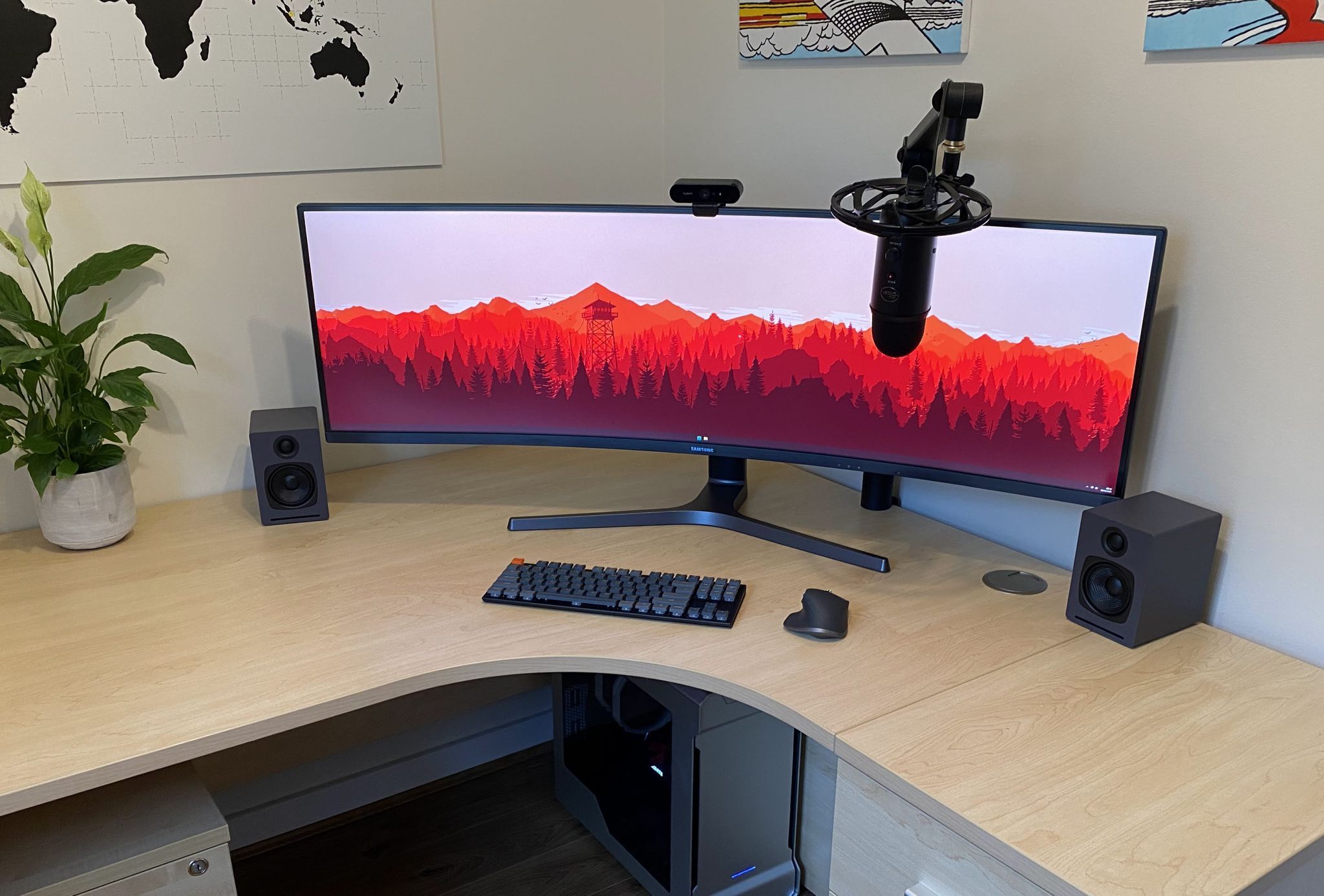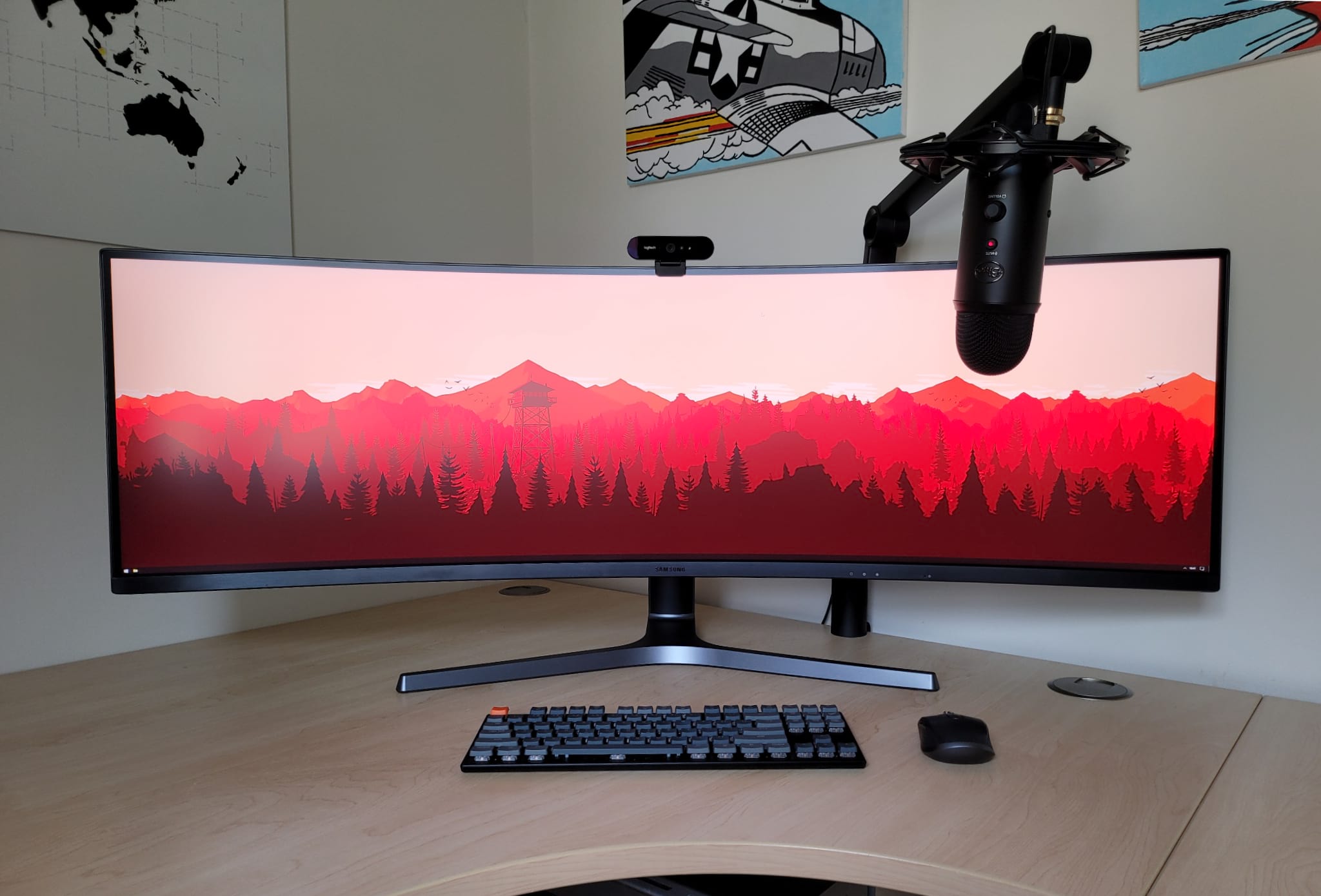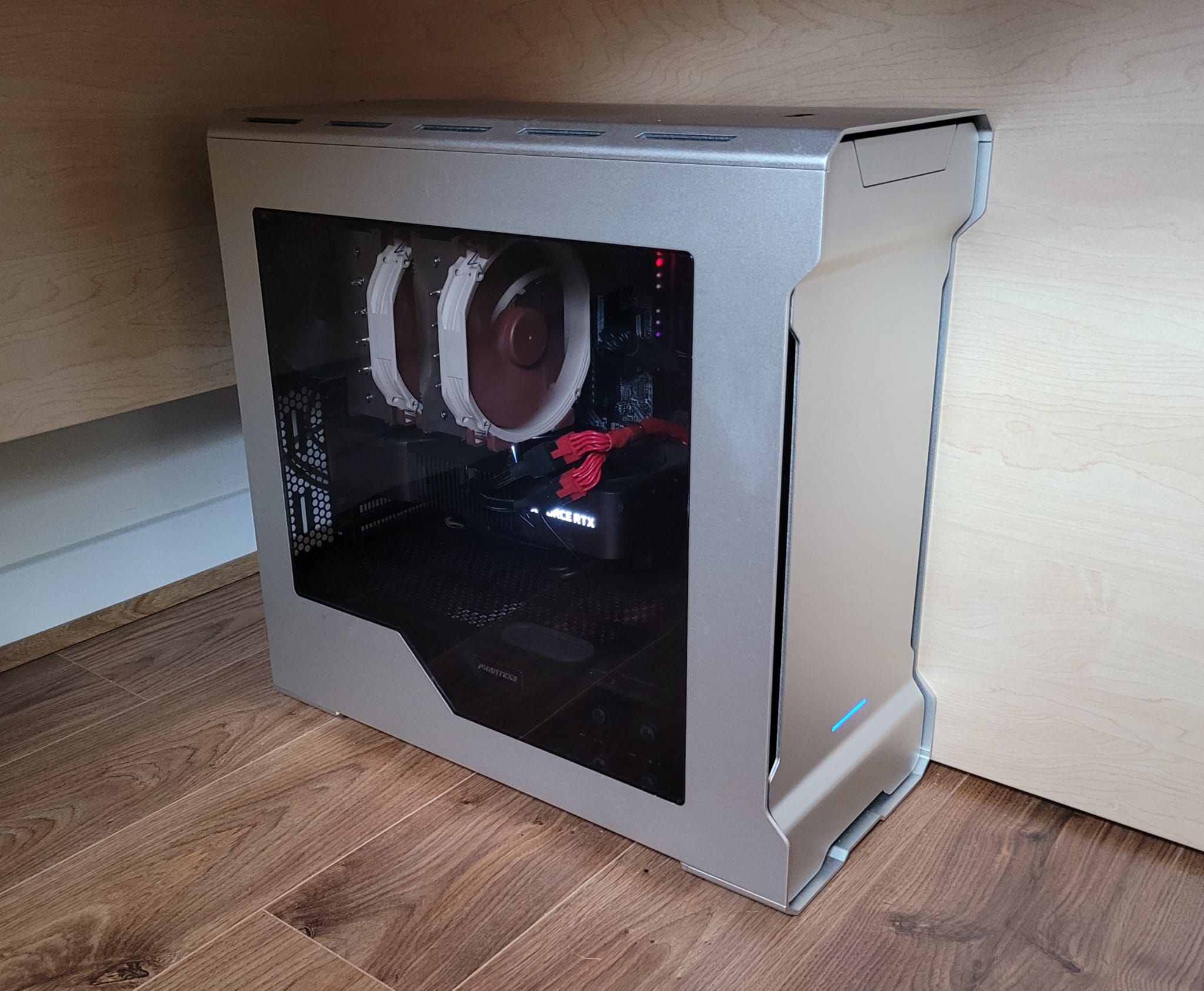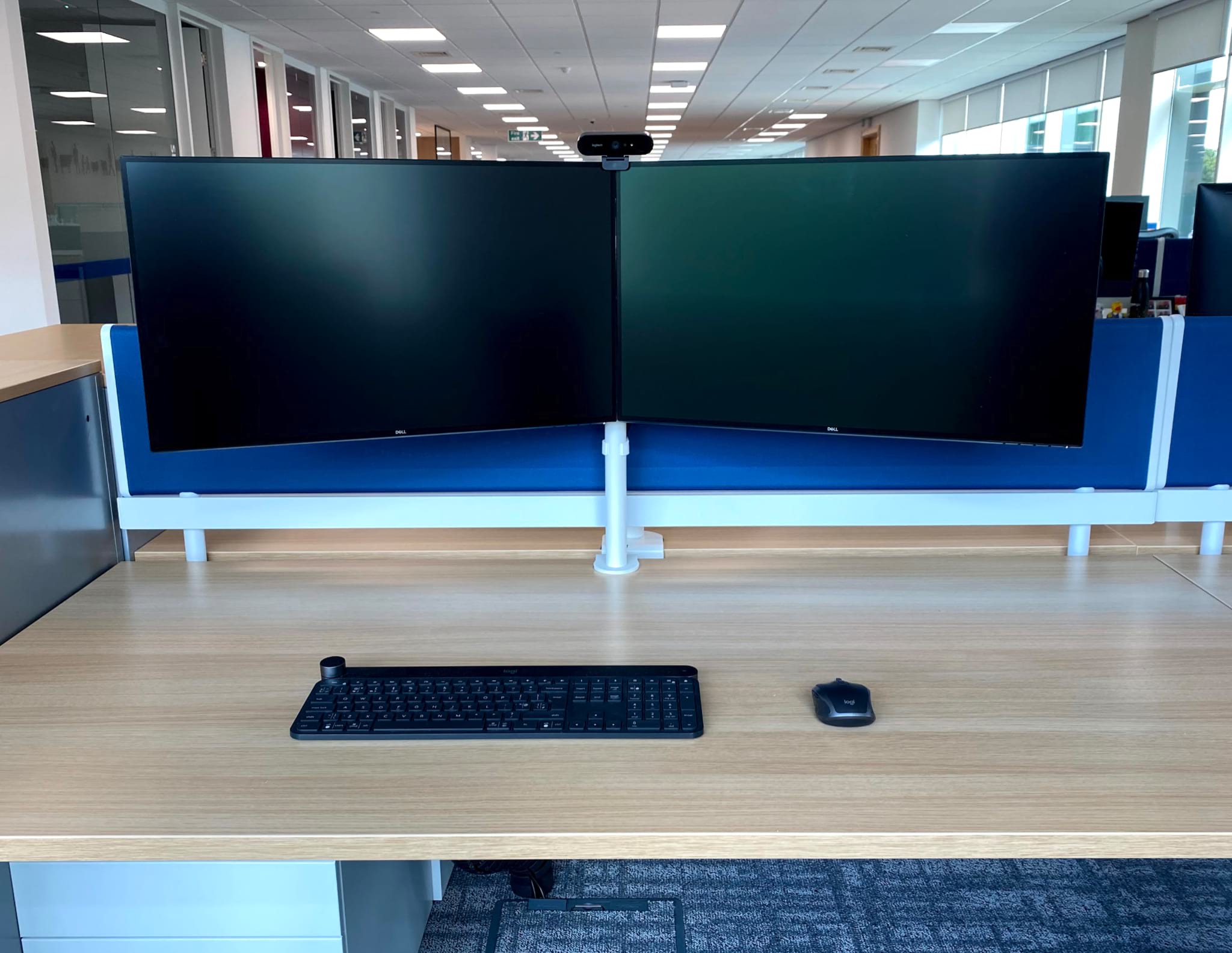My Setup (Q3 2021)
Update - Updated to include the 2021 MacBook Pro, released in October 2021.
Final Update - Please refer to the article “My Setup (Q4 2024)” for a summary of my latest setup.
Home Setup
At home, I switch between three devices (one desktop PC and two laptops).
My daily driver is a custom-built desktop PC. It is primarily used for productivity, collaboration, software development, photo editing, virtual labs, gaming and game development (GameMaker Studio 2).
The full specification can be found below:
- MSI MAG X570 Tomahawk WiFi
- AMD Ryzen 9 3950X 3.5GHz Base / 4.7GHz Boost (16C/32T)
- Noctua NH-D15 CPU Cooler
- 64GB Corsair Vengeance LPX DDR4 PC4-28800C18 3600MHz RAM
- 1TB Samsung 980 Pro M.2 PCI-e 4.0 NVM-e SSD
- 1TB Samsung PM981 M.2 PCI-e 3.0 NVM-e SSD
- NVIDIA GeForce RTX 3090 FE 24GB GDDR6X
- EVGA SuperNova P2 1000W ‘80 Plus Platinum’ PSU
- Phanteks Enthoo Evolv ATX Mid Tower Case
The AMD Ryzen 3950X, Samsung 980 Pro and Nvidia GeForce RTX 3090 are premium components, delivering high-performance across a range of workloads (e.g. multi-threading, ray-tracing gaming, machine learning, video editing, etc.)
When remote or travelling, my daily driver is a 16-inch Apple MacBook Pro (OCT-2021). Similar to my custom-build PC, it is primarily used for productivity, collaboration, software development, photo editing, video editing, virtual labs and game development.
The full specification can be found below:
- 16-inch MacBook Pro (OCT-2021)
- Apple M1 Max (10-core - 8 Performance / 2 Efficiency)
- 32-core GPU (10.4 Teraflops)
- 16-core Neural Engine
- 32GB Unified Memory (400GB/s Memory Bandwidth)
- 1TB SSD (7.4GB/s Read)
- 3x Thunderbolt 4, HDMI, 3.5mm Headphone, SDXC Card Reader, MagSafe 3
- 16.2-inch Liquid Retina XDR Display (3456x2234 @ 120Hz, 1600nits)
I also have a secondary laptop, the Dell XPS 17 which runs Linux, specificlly Pop!_OS, but also hosts multiple virtual machines, covering Windows and other Linux Distributions.
The full specification can be found below:
- Dell XPS 17 (9710)
- Intel Core i9-11900HK 2.6GHz Base / 5.0GHz Boost (8C/16T)
- 64GB DDR4 3200MHz RAM
- 1TB M.2 PCI-e NVM-e SSD
- Intel UHD Graphics 750
- NVIDIA GeForce RTX 3060 Ti 6GB GDDR6 (70W)
- 17-inch Touch Display (3840x2400, 500nits)
At home, the desktop PC and laptops connect to a 49-inch Super Ultra-Wide monitor, specifically the Samsung C49RG90.
The full specification of the monitor can be found below.
- Model: Samsung C49RG90
- Panel Size: 49-inch
- Panel Type: VA
- Panel Curvature: 1800R
- Aspect Ratio: 32:9
- Resolution: 5120x1440
- Refresh Rate: 120Hz
- Variable Refresh Rate: AMD FreeSync 2 (48-120Hz Range)
- Response Time: 4ms (GTG)
- Colour Accuracy: 125% sRGB, 92% Adobe RGB, 95% DCI-P3
- High Dynamic Range: HDR1000
- Brightness: 600cd/m2 (Typical), 1000cd/m2 (Peak)
My workspace is kept fairly minimal, the Dell XPS 17 and Apple MacBook Pro connect to the monitor directly (DisplayPort v1.4), with peripherals connecting via a UGREEN 5-in-1 USB-C Hub, which simplifies the cable management.

As you can see, for peripherals, I primarily use the Keychron K1 Version 4, Logitech MX Master 3 and Logitech Brio Ultra HD Pro. The keyboard and mouse were selected as they include “easy-switch”, which makes it simple to toggle between multiple Bluetooth devices.
The photo also highlights my microphone setup, which is a Blue Yeti connected to the Blue Yeticaster, which includes the Compass Boom Arm and Radius III Custom Shockmount. The microphone is primarily used for video conferencing, screencasting, webinars and podcasts.
The photo below provides a closer look at the Samsung C49RG90 monitor.

Additional peripherals include speakers (AudioEngine A1), headphones (Razer BlackShark V2 and Bang & Olufsen BeoPlay H8), controller (Microsoft Xbox Elite Series 2), flight controller (Saitek X-55), steering wheel (Logitech G29) and virtual reality headset (Oculus Quest).
As highlighted in the photo below, my desktop PC is hidden under the desk, with the case door exposed providing easy access to the components.

The desk and matching pedestals are from Three Counties Office Furniture. They are designed for corporate use, therefore are hard-wearing and include integrated cable management.
Finally, I use a Herman Miller Mirra 2 chair, which aims to balance comfort and personalised ergonomics in a single design.
Home Server
Alongside my desktop PC and laptops, I have a small home server, which is connected to my Samsung Q7FN QLED TV. The server manages local and cloud backups, media streaming, and collaboration (video conferencing).
I selected an Apple Mac mini (NOV-2018) for the server, thanks to its excellent power-efficiency (150W max), high-performance I/O (4x Thunderbolt 3, 2x USB-A 3.0) and small form factor. The Mac mini also offers versatile video conferencing capabilities covering Apple FaceTime, Zoom, Microsoft Teams, Google Meet, Cisco WebEx, WhatsApp Video, etc.
The full specification of the Mac mini can be found below:
- Apple Mac mini (NOV-2018)
- Intel Core i5-8500B 3.0GHz Base / 4.1GHz Boost (6C/6T)
- 64GB Corsair Vengeance Series 2666MHz DDR4 RAM
- 256GB PCI-e SSD
- Intel UHD Graphics 630
- 2x 500GB Samsung Portable T5 SSD (USB 3.1 Gen2)
The 1256GB of local SSD storage is split across multiple drives for resilience, with automated backups being completed by Carbon Copy Cloner and Cloud Storage via Dropbox.
To support my minimal (hidden-wire) entertainment setup, the Mac mini is located in a cupboard under the stairs, connected directly to the Samsung One Connect box via HDMI.
The cupboard is a little cluttered, with all the AV equipment (Sony STR-DN1050 AV Receiver, Sony PlayStation 5, Apple Mac mini, Apple TV 4K, Logitech Harmony Hub), but is rarely accessed and offers plenty of room for ventilation.
The only peripheral connected directly to the Mac mini is a Logitech Brio Ultra HD Pro webcam, which delivers phenomenal video quality (4K/30fps - HDR), a wide viewing angle (90-degree dFoV) and a surprisingly good stereo, dual omnidirectional integrated microphone.
Work Setup
At work, I use the Apple MacBook Pro and/or Dell XPS 17 (depending on the workload).
I use two 27-inch Dell U2718Q IPS HDR 4K monitors, connected via a StarTech Dual-DisplayPort to ThunderBolt 3 Adapter. The peripherals include a Logitech Craft, Logitech MX Anywhere 3 and Logitech Brio Ultra HD Pro.

The desk is very basic, with a simple dual-monitor stand. Similar to at home, I use a Herman Miller Mirra 2 chair at work.